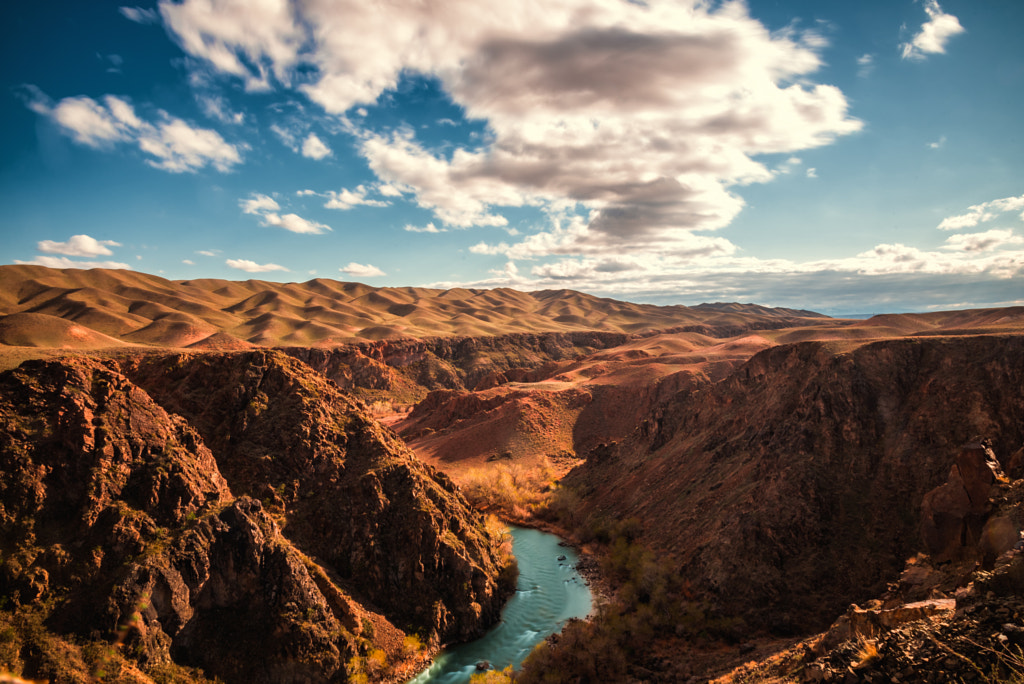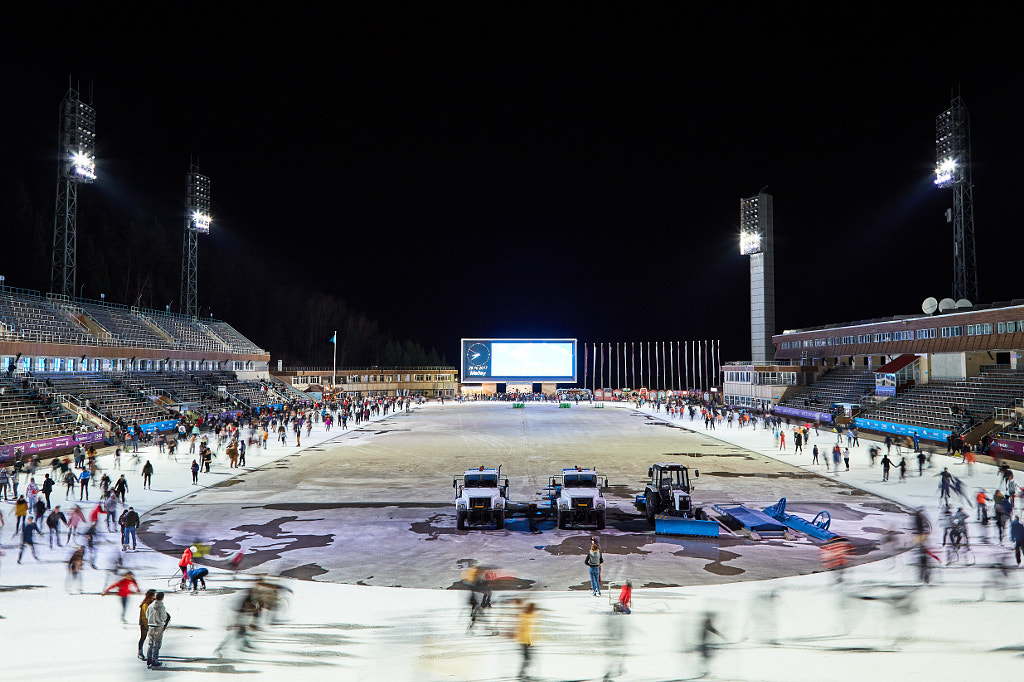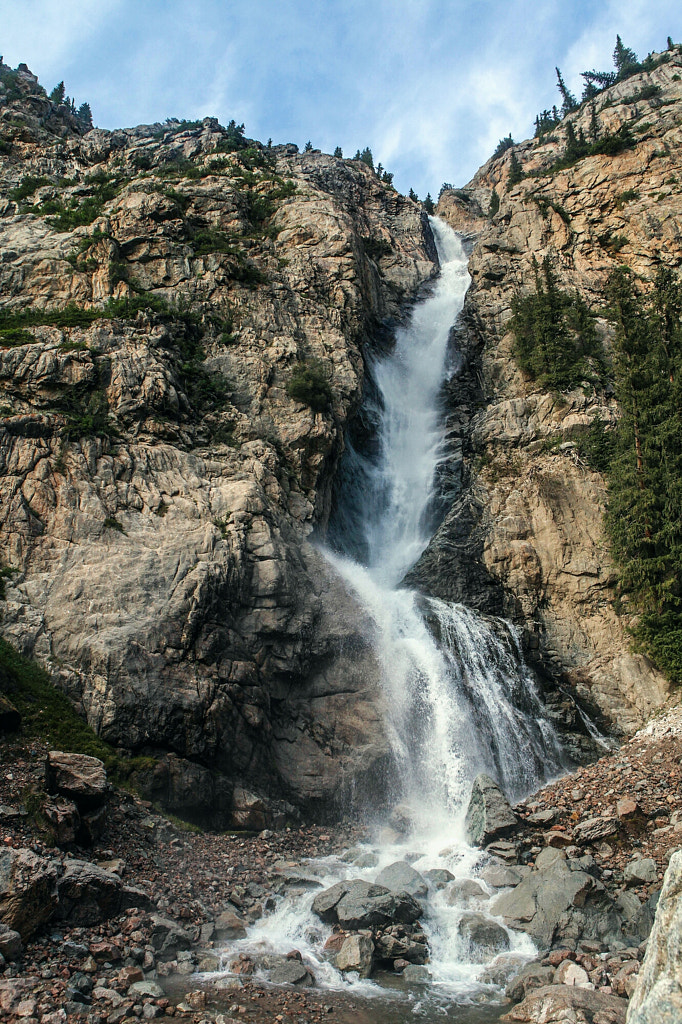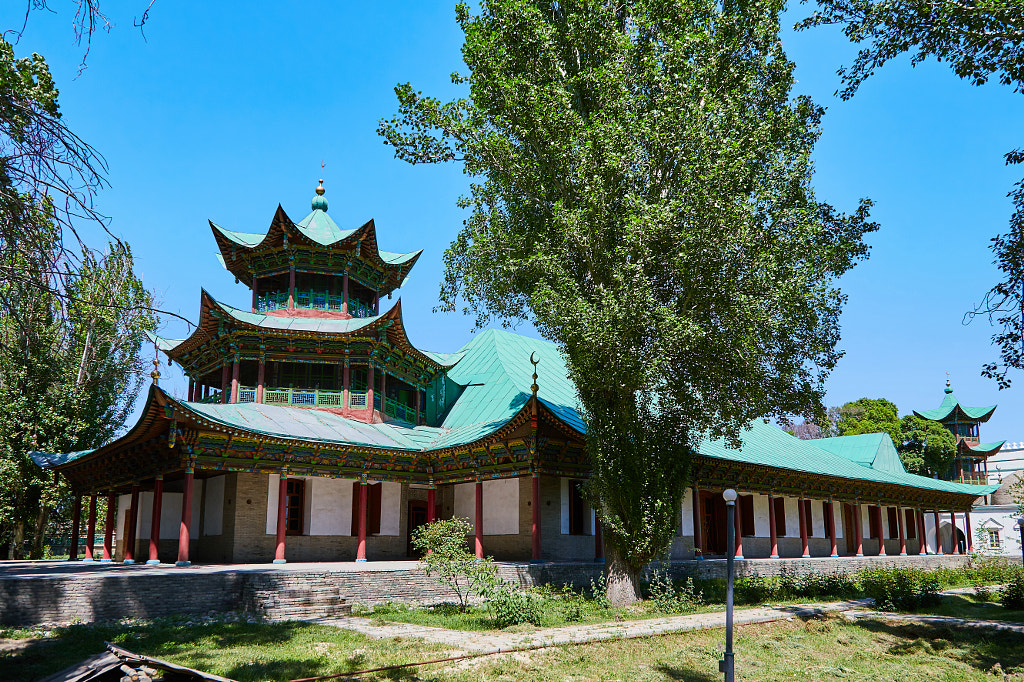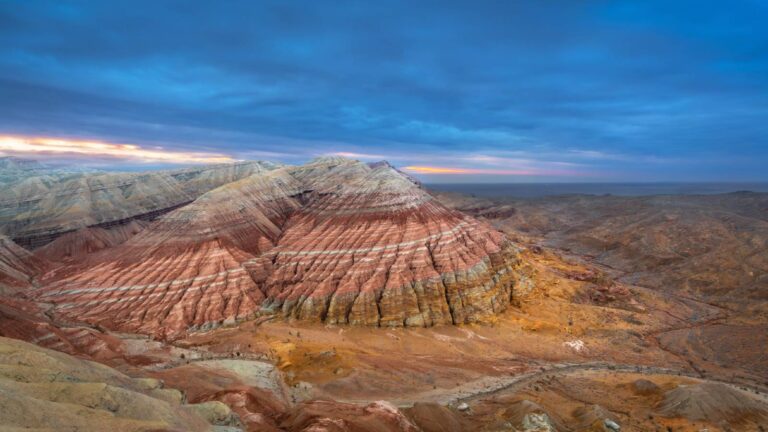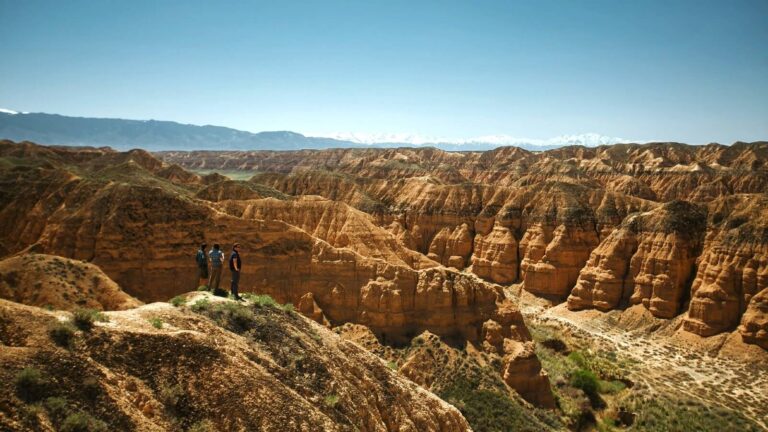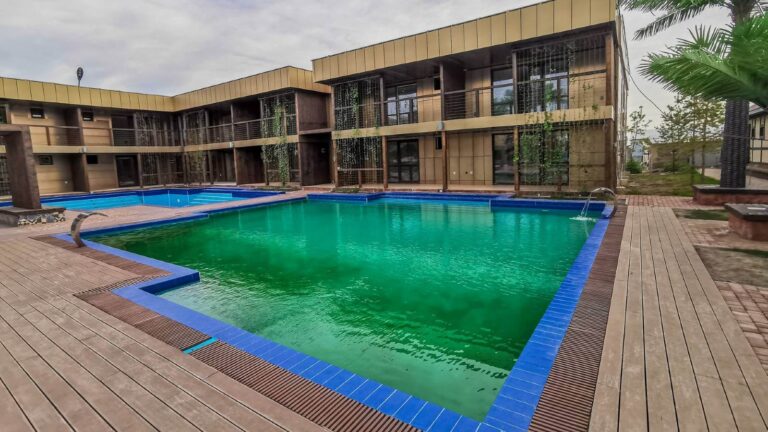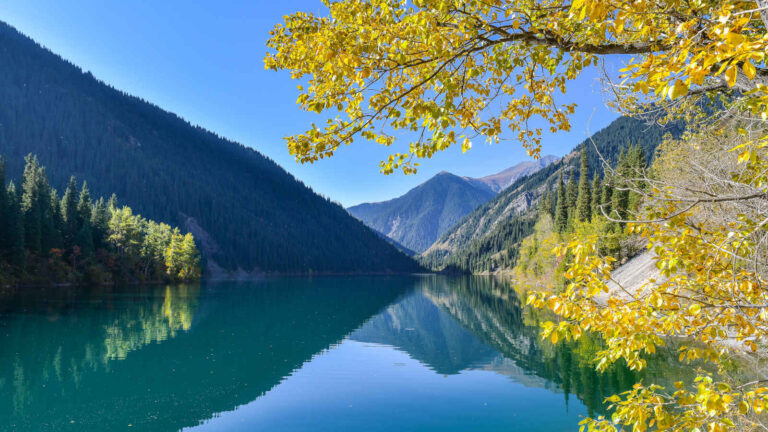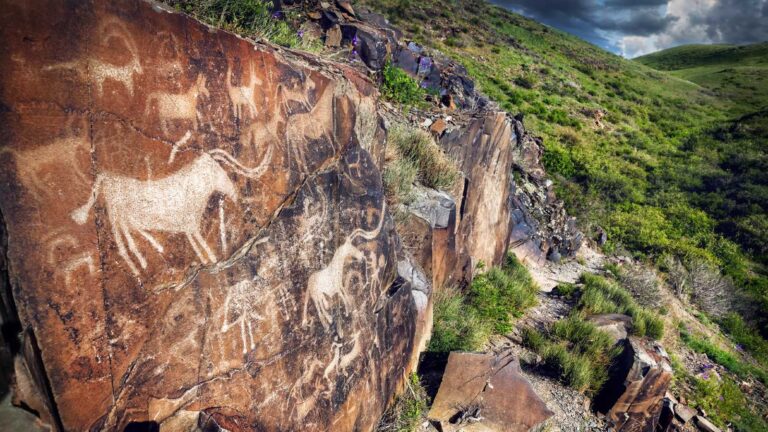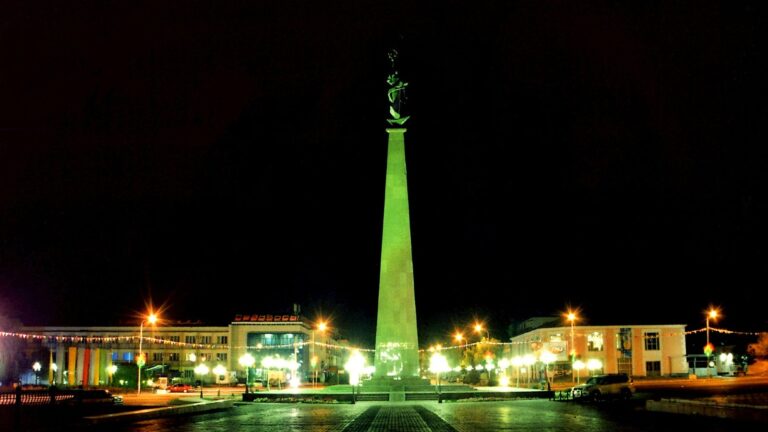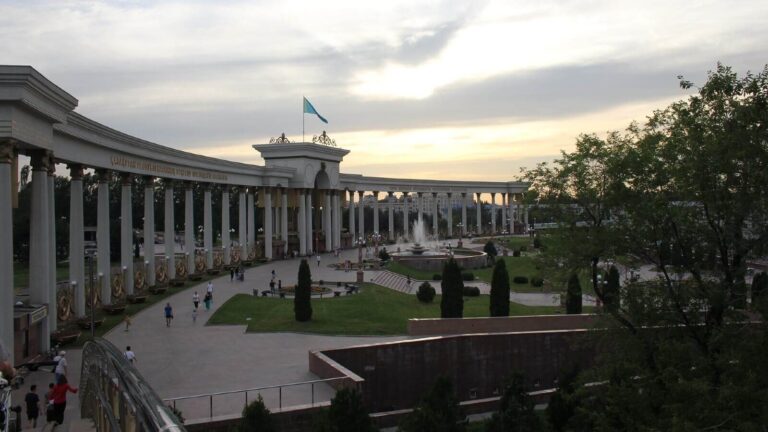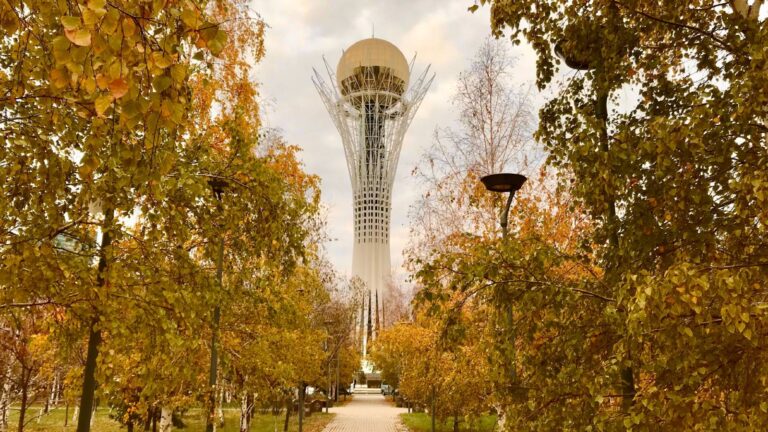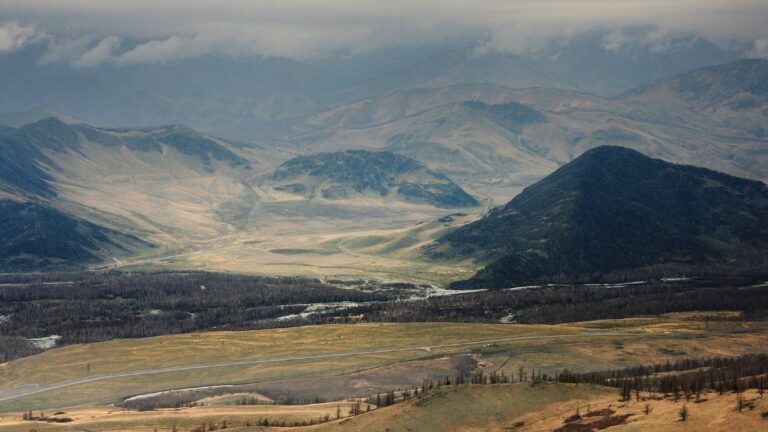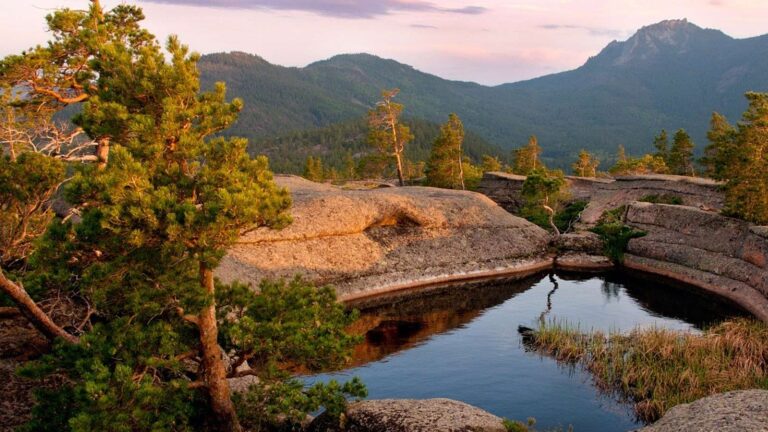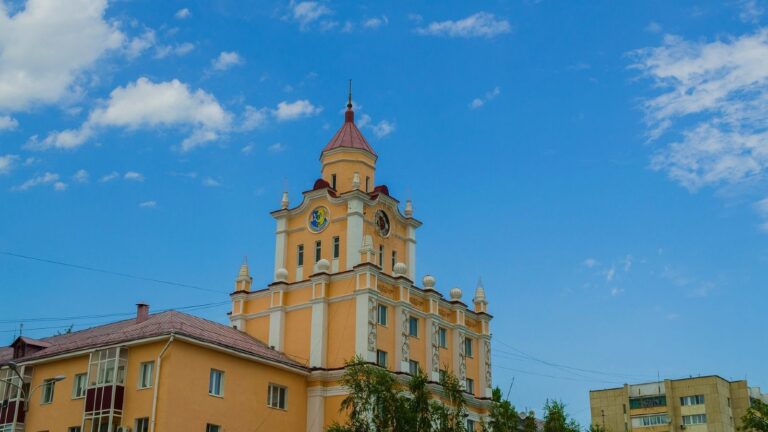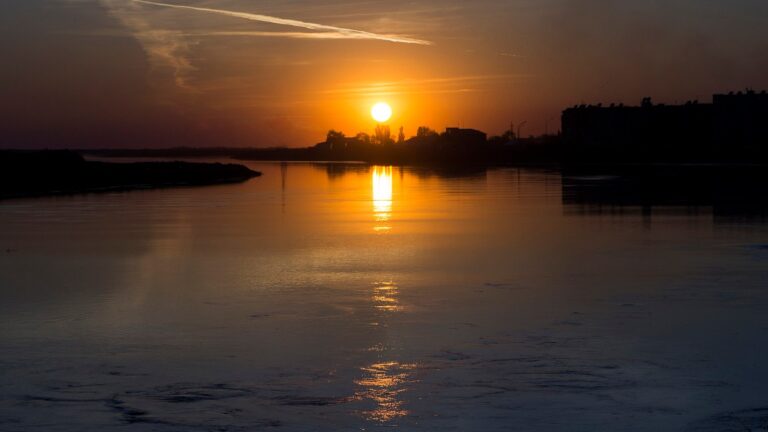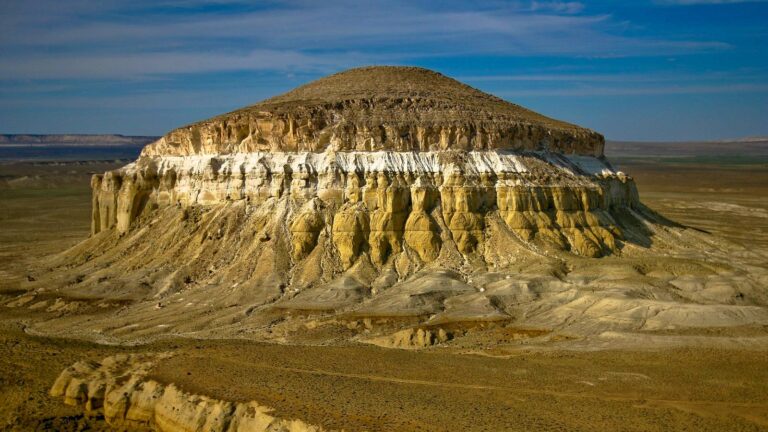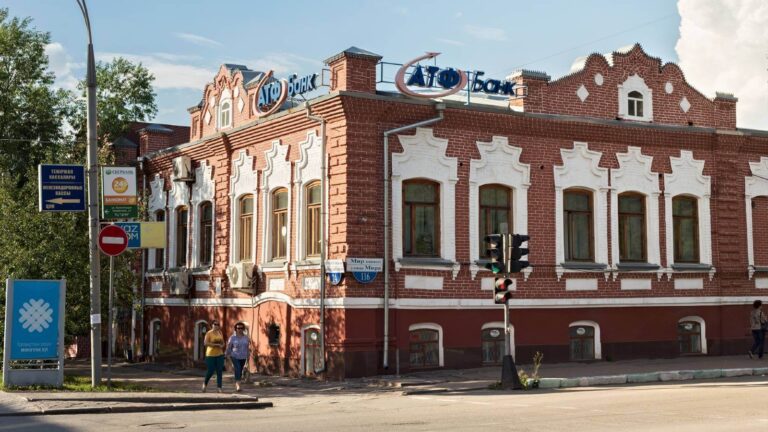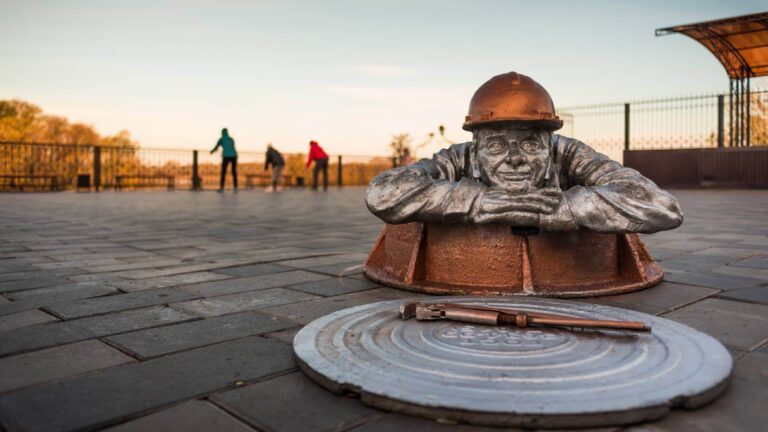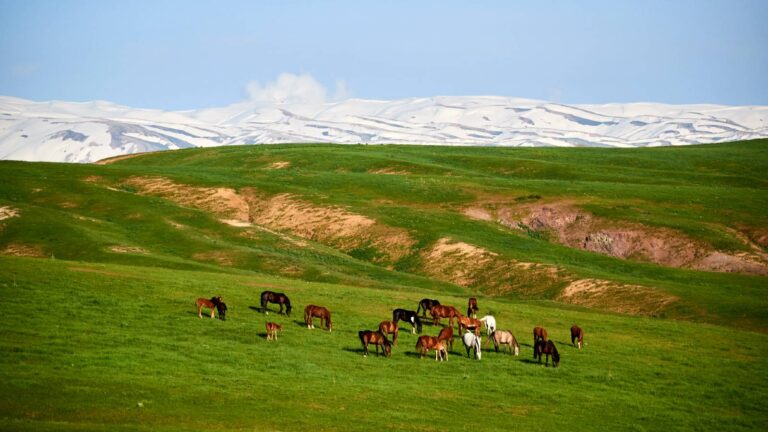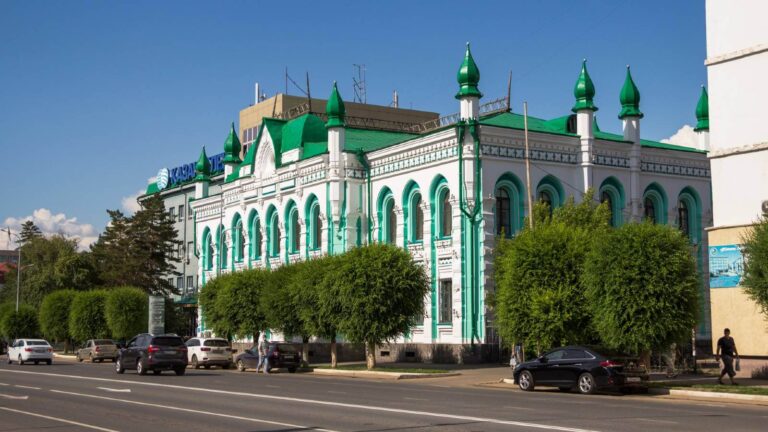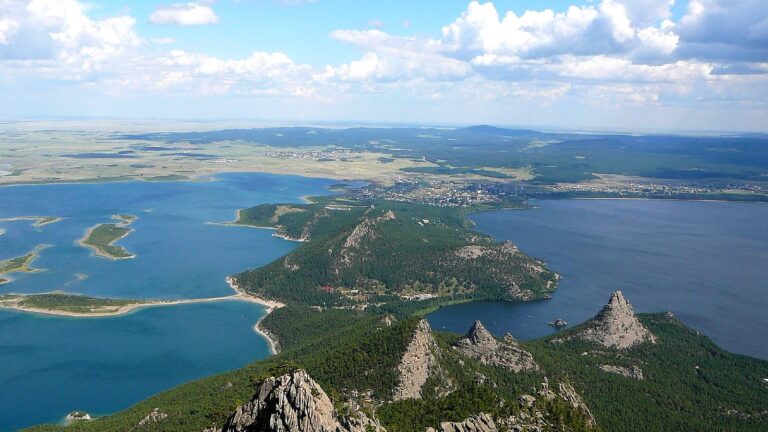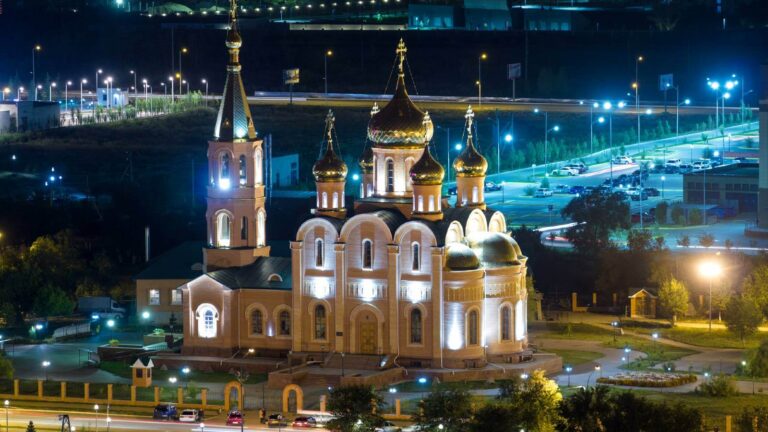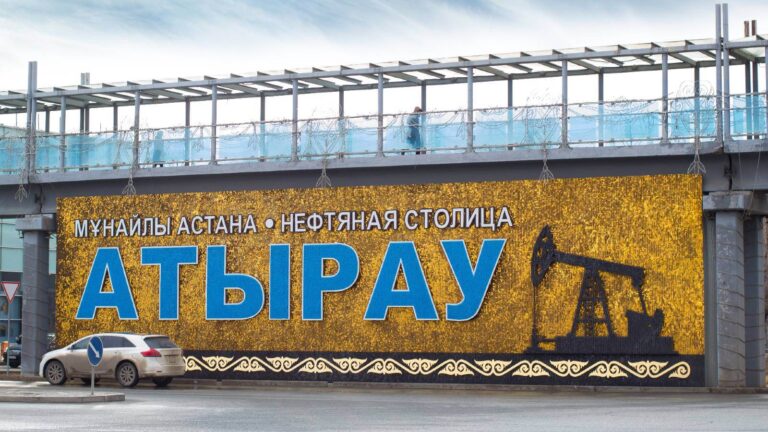The most common way to reach the region is to fly into Almaty International Airport, which is well connected to domestic and international destinations. Alternatively, long-distance trains in Kazakhstan are a good option for those with the time for a scenic trip through the steppe.
Explore the vibrant city of Almaty, the former capital of Kazakhstan. Visit the Central State Museum to learn about the country’s history, stroll through the picturesque Panfilov Park, and shop at the bustling Green Bazaar. Don’t miss the opportunity to take a cable car ride to Kok Tobe, a hill with panoramic views of the city.
Discover the breathtaking beauty of Charyn Canyon, often referred to as the “Grand Canyon of Central Asia.” Marvel at its towering cliffs, deep gorges, and unique rock formations. Take a hike along the canyon trails, enjoy a picnic by the Charyn river, or go camping in the stunning natural surroundings.
Visit the Medeu Skating Rink, located in the Medeu Valley near Almaty. This world-famous outdoor ice rink is surrounded by forested mountain slopes.
With their crystal-clear turquoise waters surrounded by majestic mountains and lush forests, the three Kolsai Lakes offer opportunities for horse riding and hiking in a peaceful atmosphere for nature enthusiasts to enjoy.
Almaty region is known for its apple orchards, producing a variety of delicious apples. Additionally, the region is home to vineyards that produce a range of quality wines, offering opportunities for wine tasting and vineyard tours.
Other Highlights of the region
Tourism’s seasonality is driven by climatic condition at the destination. The summer months are suitable for hiking in the highlands as well as relaxing on the beaches. In spring and autumn, it is comfortable to travel through protected natural areas, exploring their potential. The winter months are attractive for skiing and snowboarding.
- Khan Tengri Peak (7010 m) “Lord of Spirits”, the sacred mountain of the Turks
- Charyn canyon – the “Valley of Castles” canyon, a relict ash grove of 5 million years old
- Lake Kayindy – fir trees growing directly from the water
- Aigaykum singing dune
- Alakol lake with bitter-salt water and a high content of radon
- Burkhan-Bulak is one of the largest waterfalls in Semirechye
- Tanbaly natural open-air museum of rock carvings (about 5,000 petroglyphs) is included in the UNESCO World Heritage List. Besides the stone engravings there are burial grounds in the area dated back to the VI-VIII centuries AD
One of the region’s most significant historical artifacts of the region’s ancient past is the Golden Man, a ceremonial burial suit adorned with gold ornaments dated back to the Scythian residents of the area in the Bronze Age. Discovered in a burial mound near the village of Issyk, the Golden Man is considered a symbol of regional identity and an iconic archaeological find.
Gradually, Indo-Europeans like the Scythians were displaced by Turkic peoples migrating from Inner Asia, defining the region’s ethnic mix to this day. In the 19th century, the Russian Empire expanded into the region, establishing settlements and influencing the local population. The city of Verny (now Almaty) grew as a Russian military outpost and trading hub.
Many historical and cultural monuments have been preserved on the territory of the region. Among them, one can especially note the Issyk burial mounds, in one of which the “Golden Man” was found, the Talgar settlement, where traces of early medieval metallurgy were found, the ancient city of Koilyk, where Buddhist and Christian temples are adjacent to a Muslim mosque, and of course the Tanbala rock galleries included in UNESCO World Cultural Heritage List.
The Almaty region hosts a range of cultural festivals that celebrate its diverse heritage. The Spirit of Tengri festival showcases traditional and contemporary music from Kazakhstan and around the world, with performances by renowned musicians.
Almaty’s International Jazz Festival is a major highlight, attracting jazz enthusiasts and artists from all over, creating a lively atmosphere filled with captivating melodies.
The geography of the Almaty region is characterised by the presence of the Zailiysky Alatau and Kungey-Alatau mountain ranges.
The region is also home to several prominent lakes, including Big Almaty Lake, the enormous Lake Balkhash as well as the Kolsai Lakes system, known for their stunning surroundings. The Ili river, one of the largest rivers in Kazakhstan, flows through the region, contributing to its fertile valleys and agricultural productivity.
In terms of climate, the Almaty region experiences a continental climate with distinct seasons. Summers are warm with temperatures averaging around 25°C (77°F), while winters are cold with temperatures dropping below freezing, often accompanied by snowfall. Spring and autumn bring mild temperatures and are ideal for visiting.
Almaty is Kazakhstan’s biggest city and serves as a hub for commerce, finance, and services. It is home to a thriving business sector, with a range of industries including manufacturing, construction, and trade. The city also hosts various international conferences and exhibitions, boosting its economic significance.
Beyond the city limits, the region is known for its fertile soils and favourable climatic conditions. Wheat, barley, fruits, and vegetables are some of the main agricultural products cultivated in the region. Livestock farming, including cattle, sheep, and horses, is also prominent.

